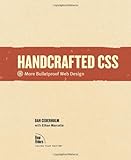The rapid development of internet has result in constant advancement in web designing and coding. HTML has emphasized more the content of a web page rather than its aesthetics. However, times have changes and immaculate web design is a key to a website's reach and popularity. CSS has now become a key element which addresses the presentation of websites.
Know the Idea
The idea of CSS stems from the need of eliminating the frequent use of similar tags in HTML while on the same page. The initial idea was to have one file which will define all the values for the repetitive similar tags. All the other ensuing pages could then check this single file and get formatted accordingly. This would result in lesser work load and HTML coders can leave out a majority of formatting tags in HTML. They can focus on using structural elements link paragraphs, links etc.
What It Stands for?
CSS stands for Cascading Style Sheets. These style sheets works as an accomplice to HTML coding by addressing the issues of color, font, layout and even the entire look and feel of the website. To change a look of a particular website, all that is needed is to modify the single CSS file and every concerned HTML page will automatically display in a different manner. This makes website maintenance quick and easy.
The List of Benefits
CSS has made the entire process of coding and recoding faster and easier. It takes the hassle of defining and redefining the same things on every HTML page. The benefits of CSS translate into these:
o With the use of CSS, web pages take lesser time to download. The time gets reduced by as much as 50% in some cases.
o HTML coders now have to type less code and the web pages are concise and look better.
o CSS helps in maintaining a consistent look of the entre website as the pages read from a single style sheet.
o The amount of errors while coding gets reduced dramatically as coders do not have to type the same code many times over.
o Site maintenance and updating the website's design is much easier.
Ushering the Future
CSS can prove to be difficult for beginners. If one urgently needs to convert PSD to CSS or other services like table-less XHTML, XHTML slicing among others, it is better to seek professional help. However, the effort of leaning it is more than worth it as it is a well designed and neat language. It is a key element in the development of future design and has been a welcome change from the days when coders would have to contend with frequent usage of presentational HTML tags.
CSS provides for greater accessibility and visibility of a website's content. It facilitates the working of the website in many of the popular browsers and even provides for website access through devices like PDAs etc. It also comes with many powerful formatting options and presents vast possibilities which were missing in the case of HTML.
To convert PSD to HTML or PSD to CSS would need the abilities of an experienced coder. Crazyxhtml offers quick PSD files conversion which includes hand coded, browser compatibility, W3C valid, commented and table-less XHTML coding. They provide all the latest technologies that make a website more accessible, faster, functional and interesting.
|
|



